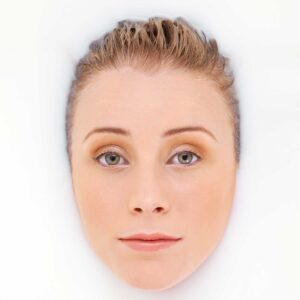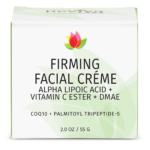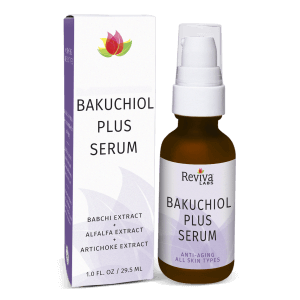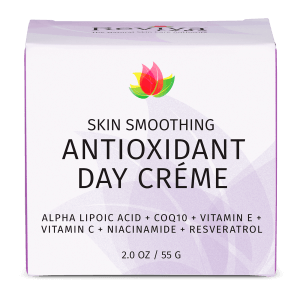Reviva Labs, Skin Care
How to Adjust Your Skincare Routine to New Climates
Moving to a new climate can bring noticeable changes to your skin. While some may experience a mild adjustment period, others could face more challenging issues as their skin reacts to environmental shifts. Whether it’s relocating to a colder, drier environment or finding yourself in a more humid and hotter region, your skin is highly sensitive to shifts in temperature, humidity, and environmental conditions. The skin’s barrier, which helps maintain moisture and protect against external irritants, may struggle to adapt to new surroundings. These changes can lead to a variety of skin issues, leaving your complexion feeling less than its best.
How Dry Climates Affect Your Skin
When moving to a dry or arid climate, you may notice your skin becomes significantly drier. This can happen because lower humidity levels pull moisture out of the skin, making it difficult for your natural oils to keep up. Your skin barrier may become compromised, leading to flakiness, rough texture, and even cracking in severe cases.
A lack of hydration in the air means that moisture evaporates more quickly from your skin, leaving it dehydrated and feeling tight. People with sensitive skin might also experience redness and irritation as their skin struggles to maintain its natural balance. To counter these concerns, switch to a non-foaming cleanser that is milky or creamy in texture. This will ensure that your skin remains soft and supple after cleansing. You will also need a richer moisturizer. Look for products include hydrating ingredients like hyaluronic acid or glycerin to help lock in moisture and prevent further dehydration.
Cold Weather and Flare-ups
Colder climates pose their own challenges. Cold air, especially when combined with indoor heating, can be particularly harsh on the skin. You might find your skin becoming not only dry but also prone to redness and sensitivity. This happens because cold weather causes blood vessels to constrict, reducing circulation and resulting in paler, more sensitive skin. Windburn is another common issue for those living in cold, windy environments, leading to chapping and general irritation of the skin.
To help combat these issues, layering skincare products becomes important. Start with a hydrating serum followed by a thicker moisturizer to create a barrier against the harsh elements. Occlusives like shea butter or ceramides can be especially helpful in preventing moisture loss. It’s also essential to protect your skin when outdoors—using scarves or wearing protective clothing can shield the skin from direct exposure to cold air. And when indoors, using a humidifier can help maintain moisture levels in the environment, reducing the chances of your skin becoming too dry.
Impact of UV Exposure in Sunny Climates
Relocating to a region with more sunshine can bring about other challenges. Increased sun exposure means a greater risk of sunburn, pigmentation, and long-term damage like premature aging. Even if your skin doesn’t burn easily, the cumulative effect of more UV rays can accelerate the appearance of fine lines and wrinkles or cause uneven skin tone.
To protect your skin, sunscreen becomes non-negotiable in sunny climates. A broad-spectrum SPF of at least 30 should be applied daily, even when it’s cloudy. Additionally, wearing hats and seeking shade during peak hours will give your skin extra protection from UV damage. Incorporating antioxidants like Vitamin C into your skincare routine can also help neutralize free radicals caused by sun exposure.
Humidity and Oily Skin Woes
On the opposite end of the spectrum, humid climates can wreak havoc on oily or acne-prone skin. The increase in moisture and heat leads to excess sweating, which can clog pores and cause breakouts. This combination of sweat, oil, and dirt makes the skin more prone to blemishes and uneven texture.
To combat these issues, switch to lightweight, oil-free moisturizers that hydrate without clogging pores. Opting for gel-based formulas can keep your skin feeling refreshed without adding to the oil production. Exfoliation also becomes key in this scenario—look for products containing salicylic acid or glycolic acid to help slough off dead skin cells and keep pores clear. And don’t forget sunscreen! Despite the humidity, sun damage can still occur, making a broad-spectrum, non-comedogenic sunscreen essential.
Altitude Changes and Skin Challenges
If you’re moving to a high-altitude area, you may notice that your skin reacts quite dramatically to the thinner, drier air. At higher elevations, UV exposure is stronger due to less atmospheric protection, and the air tends to be much drier, pulling moisture from your skin more quickly than at sea level.
In these environments, extra hydration and sun protection are crucial. Opt for creams rich in hydrating ingredients like ceramides, which help reinforce the skin’s natural barrier. You may also want to use a heavier, ointment-like product on particularly dry areas, such as around the nose or on the cheeks. Sunscreen, again, is non-negotiable. Even if the weather feels cooler, the UV rays are more intense, so frequent application of a broad-spectrum sunscreen is essential.
The Impact of Pollution in Urban Areas
If you’ve moved to a densely populated urban area, pollution could be an unexpected factor affecting your skin. Air pollutants, especially particulate matter, can settle on the skin’s surface and lead to clogged pores, dullness, and inflammation. Over time, these pollutants break down the skin’s protective barrier, making it more susceptible to damage and accelerating aging.
To combat the effects of pollution, cleansing becomes a crucial step. Double cleansing, especially at night, can remove any residue of pollutants that have built up throughout the day. Antioxidants in your skincare, such as green tea extract or Vitamin E, can also provide protection by neutralizing harmful free radicals.

Adapting to Changing Climates
The key to maintaining healthy skin through climate changes is being proactive and responsive to your skin’s needs. Moving to a different climate means that your old skincare routine might not be as effective, and it’s essential to adjust accordingly. This might involve switching products, using more (or less) moisturizer, or simply adopting new habits that cater to your skin’s changing environment.
If you’re moving to a colder or drier climate, think about investing in a humidifier to keep moisture in the air at home. Those in humid areas might find that blotting papers or a mattifying primer help reduce excess shine. No matter where you are, hydration and sun protection should remain at the core of your routine. If you’re struggling to adapt, consulting with a dermatologist can help you create a skincare plan tailored to your new environment.
Listening to Your Skin
Your skin needs time to adjust to new surroundings. It might take a few weeks or even months for your skin to fully adapt to a different climate. In the meantime, be gentle with it—overcorrecting too quickly with new products or harsh ingredients could lead to further irritation or imbalance. Instead, introduce new skincare products gradually and observe how your skin responds.
Climate changes can be tough on the skin, but with a few thoughtful adjustments, you can help it thrive no matter where you are.











